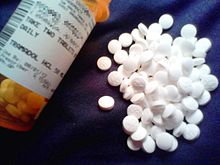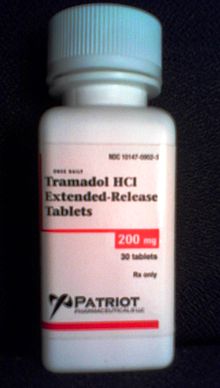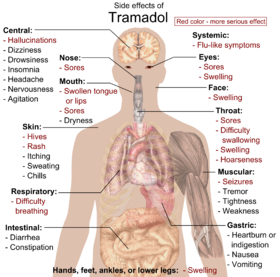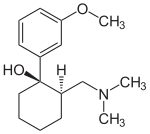Tadalafil is a PDE5 inhibitor, currently marketed in pill form for treating erectile dysfunction (ED) under the name Cialis; and under the name Adcirca for the treatment of pulmonary arterial hypertension. It initially was developed by the biotechnology company ICOS, and then again developed and marketed world-wide by Lilly ICOS, LLC, the joint venture of ICOS Corporation andEli Lilly and Company. Cialis tablets, in 5 mg, 10 mg, and 20 mg doses, are yellow, film-coated, and almond-shaped. The approved dose for pulmonary arterial hypertension is 40 mg (two 20-mg tablets) once daily.
Tadalafil is also manufactured and sold under the name of Tadacip by the Indian pharmaceutical company Cipla in doses of 10 mg and 20 mg.
On November 21, 2003 the Food and Drug Administration approved tadalafil (as Cialis) for sale in the United States as the third ED prescription drug pill (after sildenafil citrate (Viagra) andvardenafil (Levitra)). Cialis's 36-hour effectiveness earned it the nickname, "The Weekend Pill"; like sildenafil and vardenafil, tadalafil is recommended as an 'as needed' medication. Cialis is the only one of the three that is also offered as a once-daily medication.
Moreover, tadalafil was approved in May 2009 in the United States for the treatment of pulmonary arterial hypertension and is currently under regulatory review in other regions for this condition. In late November 2008, Eli Lilly sold the exclusive rights to commercialize tadalafil for pulmonary arterial hypertension in the United States to United Therapeutics for an upfront payment of $150 million.
Contents[hide] |
[edit]History
The FDA's approval of Viagra (Sildenafil) on March 27, 1998 was a ground-breaking commercial event for the treatment of ED, with sales exceeding one billion dollars. Subsequently, the FDA approved Levitra (vardenafil) on August 19, 2003, and Cialis (tadalafil) on November 21, 2003.
Cialis was discovered by Glaxo Wellcome (now GlaxoSmithKline) under a partnership between Glaxo and ICOS to develop new drugs that began in August 1991.[1][2] In 1993, the Bothell, Washington, biotechnology company ICOS Corporation began studying compound IC351, a phosphodiesterase type 5 (PDE5) enzyme inhibitor. In 1994, Pfizer scientists discovered that sildenafil, which also inhibits the PDE5 enzyme, caused penile erection in men participating in a clinical study of a heart medicine. Although ICOS scientists were not testing compound IC351 for treating ED, they recognized its potential usefulness for treating that disorder. Soon, in 1994, ICOS received a patent for compound IC351 (structurally unlike sildenafil and vardenafil), and Phase 1 clinical trials began in 1995. In 1997, the Phase 2 clinical studies were initiated for men experiencing ED, then progressed to the Phase 3 trials that supported the drug's FDA approval. Although Glaxo had an agreement with ICOS to share profits 50/50 for drugs resulting from the partnership, Glaxo let the agreement lapse in 1996 as the drugs developed were not in the company's core markets.[3]
In 1998, ICOS Corporation and Eli Lilly and Company formed the Lilly ICOS, LLC, joint venture company to further develop and commercialize tadalafil as a treatment for ED. Two years later, Lilly ICOS, LLC, filed a new drug application with the FDA for compound IC351 (under the tadalafil generic name, and the Cialis brand name). In May 2002, Lilly ICOS reported to the American Urological Association that clinical trial testing demonstrated that tadalafil was effective for up to 36 hours, and one year later, the FDA approved tadalafil. One advantage Cialis has over Viagra and Levitra is its 17.5-hour half-life (thus Cialis is advertised to work for up to 36 hours, after which time there remains approximately 25 percent of the absorbed dose in the body) when compared to the four-hour half–life of sildenafil (Viagra).[4]
In 2007, Eli Lilly and Company bought the ICOS Corporation for 2.3 billion dollars. As a result, Eli Lilly owned Cialis and then closed the ICOS operations, ending the joint venture and firing most of ICOS's approximately 500 employees, except for 127 employees of the ICOS biologics facility, which subsequently was bought by CMC Biopharmaceuticals A/S (CMC).
Persons surnamed "Cialis" objected to Eli Lilly and Company's so naming the drug, but the company has maintained that the drug's trade name is unrelated to the surname.[5]
On October 6, 2011; The U.S. FDA approved tadalafil [6]to treat the signs and symptoms of benign prostatic hyperplasia (BPH). BPH is a condition in male, where the prostate gland becomes enlarged causing obstruction to free flow of urine. Symptoms may include sudden urges to urinate (urgency), difficulty in starting urination (hesitancy), a weak urine stream, and more frequent urination especially at night. The FDA has also approved tadalafil for treatment of BPH and erectile dysfunction (ED); where the two conditions co-exist.
[edit]Mechanism of action
| This section does not cite anyreferences or sources.(February 2011) |
Although sildenafil (Viagra), vardenafil (Levitra), and tadalafil (Cialis) all work by inhibiting PDE5, tadalafil's pharmacologic distinction is its longer half-life (17.50 hours) – compared to Viagra (4.0–5.0 hours) and Levitra (4.0–5.0 hours) – resulting in longer duration of action, and so partly responsible for "The Weekend Pill" sobriquet. Furthermore, the longer half-life is the basis for current investigation of tadalafil's daily therapeutic use in relieving pulmonary arterial hypertension. Currently, sildenafil (trade name Revatio) is approved in several world regions as a thrice-daily therapy for pulmonary arterial hypertension.
Penile erection during sexual stimulation is caused by increased penile blood flow resulting from the relaxation of penile arteries and the smooth muscle of the corpus cavernosum. This response is mediated by the release of nitric oxide (NO) from nerve terminals and endothelial cells, which stimulates the synthesis of cGMP in smooth muscle cells. Cyclic GMP relaxes smooth muscle and increases blood flow to the corpus cavernosum.
The inhibition of phosphodiesterase type 5 (PDE5) enhances erectile function by increasing the amount of cGMP. Tadalafil (and sildenafil and vardenafil) inhibits PDE5. However, because sexual stimulation is required to initiate the local penile release of nitric oxide, tadalafil's inhibition of PDE5 will have no effect without direct sexual stimulation of the penis. The recommended tadalafil starting dose for most men is 10 mg, taken as needed before sexual activity (but not more than once daily). The dose may be increased to 20 mg or decreased to 5 mg, per its efficacy and the man's personal tolerance of the drug. To avoid the inconvenience of a man having to program and plan using tadalafil around the time of his anticipated sexual activity, Lilly ICOS began a clinical development program to evaluate the risks and benefits of chronic, once-daily use of the drug. In June 2007, the European Commission approved low-dose (2.5 mg and 5 mg) Cialis to be used as single-daily ED therapy.
Moreover, tadalafil (Adcirca) 40 mg was approved in 2009 in the United States and Europe (and 2010 in Canada and Japan) as a once-daily therapy to improve exercise ability in patients with pulmonary arterial hypertension. In patients with pulmonary arterial hypertension, the pulmonary vascular lumen is decreased as a result of vasoconstriction and vascular remodeling, resulting in increased pulmonary artery pressure and pulmonary vascular resistance. Tadalafil is believed to increase pulmonary artery vasodilation, and inhibit vascular remodeling, thus lowering pulmonary arterial pressure and pulmonary vascular resistance. Right heart failure is the principal consequence of pulmonary arterial hypertension.
[edit]Side effects
Tadalafil has been used in approximately 15,000 men participating in clinical trials, and over 8 million men worldwide (primarily in the post-approval/post-marketing setting). The most common side effects when using tadalafil areheadache, indigestion, back pain, muscle aches, flushing, and stuffy or runny nose. These side effects reflect the ability of PDE5 inhibition to cause vasodilation (cause blood vessels to widen), and usually go away after a few hours. Back pain and muscle aches can occur 12 to 24 hours after taking the drug, and the symptom usually disappears after 48 hours.
In May 2005, the U.S. Food and Drug Administration found that tadalafil (along with other PDE5 inhibitors) was associated with vision impairment related to NAION (nonarteritic anterior ischemic optic neuropathy) in certain patients taking these drugs in the post-marketing (outside of clinical trials) setting. Most, but not all, of these patients had underlying anatomic or vascular risk factors for development of NAION unrelated to PDE5 use, including: low cup to disc ratio (“crowded disc”), age over 50, diabetes, hypertension, coronary artery disease, hyperlipidemia and smoking. Given the small number of NAION events with PDE5 use (less than 1 in 1 million), the large number of users of PDE5 inhibitors (millions) and the fact that this event occurs in a similar population to those who do not take these medicines, the FDA concluded that they were not able to draw a cause and effect relationship, given these patients underlying vascular risk factors or anatomical defects. However, the label of all three PDE5 inhibitors was changed to alert clinicians to a possible association.
In October 2007, the FDA announced that the labeling for all PDE5 inhibitors, including tadalafil, requires a more prominent warning of the potential risk of sudden hearing loss as the result of postmarketing reports of deafness associated with use of PDE5 inhibitors.[7]
[edit]Drug interactions
Since PDE5 inhibitors such as tadalafil may cause transiently low blood pressure (hypotension), organic nitrates should not be taken for at least 48 hours after taking the last dose of tadalafil. Using organic nitrites (such as the sex drugamyl nitrite) within this timeframe may increase the risk of life-threatening hypotension.
Since people who have taken tadalafil within the past 48 hours cannot take organic nitrates to relieve angina (such as glyceryl trinitrate spray), these patients should seek immediate medical attention if they experience anginal chest pain.[8] In the event of a medical emergency, paramedics and medical personnel should be notified of any recent doses of tadalafil.
Tadalafil is metabolized predominantly by the hepatic CYP3A4 enzyme system. The presence of other drugs which induce this system can shorten tadalafil half-life and reduce serum levels, and hence efficacy, of the drug.
[edit]Selectivity compared with other PDE5 inhibitors
Tadalafil, sildenafil, and vardenafil all act by inhibiting the PDE5 enzyme. These drugs also inhibit other PDE enzymes. Sildenafil and vardenafil inhibit PDE6, an enzyme found in the eye, more than tadalafil.[9] Some sildenafil users see a bluish tinge and have a heightened sensitivity to light because of PDE6 inhibition.[3] Sildenafil and vardenafil also inhibit PDE1 more than tadalafil.[9] PDE1 is found in the brain, heart, and vascular smooth muscle.[9] It is thought that the inhibition of PDE1 by sildenafil and vardenafil leads to vasodilation, flushing, and tachycardia.[9] Tadalafil inhibits PDE11 more than sildenafil or vardenafil.[9] PDE11 is expressed in skeletal muscle, the prostate, the liver, the kidney, thepituitary gland, and the testes.[9] The effects on the body of inhibiting PDE11 are not known.[9]
[edit]Marketing
In the United States, the FDA relaxed rules on prescription drug marketing in 1997, allowing advertisements targeted directly to consumers.[10] Lilly-ICOS hired the Grey Worldwide Agency in New York, part of theGrey Global Group, to run the Cialis advertising campaign.[11] Marketers for Cialis has taken advantage of its greater duration compared to its competitors in advertisements for the drug; Stuart Elliot of The New York Times opined: "The continuous presence of women in Cialis ads is a subtle signal that the drug makes it easier for them to set the pace with their men, in contrast to the primarily male-driven imagery for Levitra and Viagra."[11] Iconic themes in Cialis ads include couples in bathtubs and the slogan "When the moment is right, will you be ready?"[11] Cialis ads were unique among the ED drugs in mentioning specifics of the drug.[12] As a result, Cialis ads were also the first to describe the side effects in an advertisement, as the FDA requires advertisements with specifics to mention side effects. One of the first Cialis ads aired at the 2004 Super Bowl.[12] Just weeks before the Super Bowl, the FDA required more possible side effects to be listed in the advertisement, including priapism.[12] Although many parents objected to the Cialis ad being aired during the Super Bowl, Janet Jackson's halftime "wardrobe malfunction" overshadowed Cialis.[12] In January 2006, the Cialis ads were tweaked, adding a doctor on screen to describe side effects and only running ads where more than 90 percent of the audience are adults, effectively ending Super Bowl ads.[10] In 2004, Lilly-ICOS, Pfizer, and GlaxoSmithKline spent a combined $373.1 million to advertise Cialis, Viagra, and Levitra respectively.[12] Cialis has sponsored many golf events, including the America's Cup and the PGA Tour, once being title sponsor of the PGA Tour Western Open tournament.[13]











